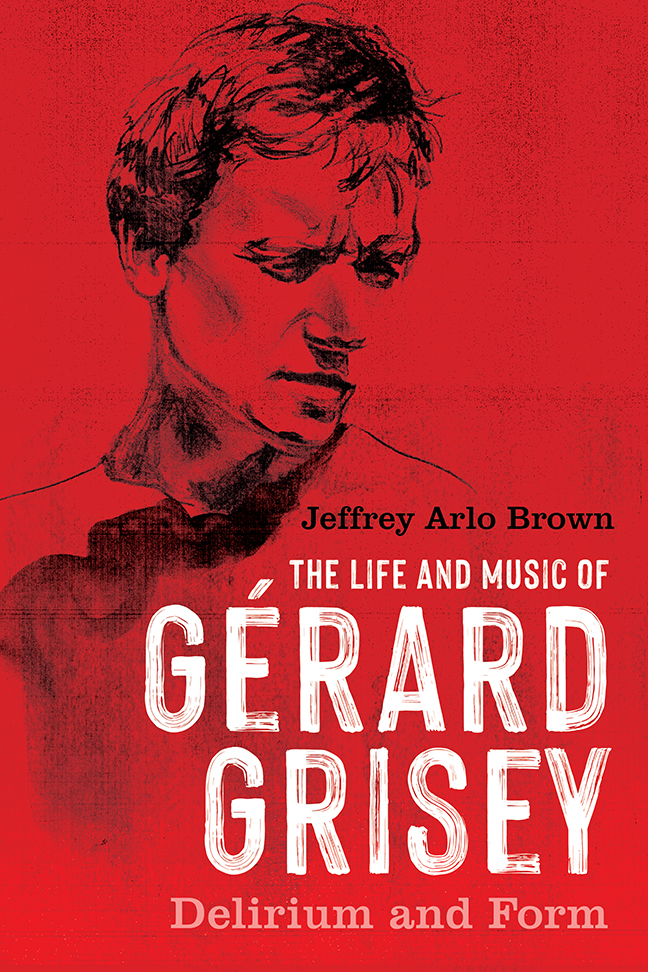Book contents
- Frontmatter
- Contents
- List of Illustrations
- Acknowledgments
- One The Lost Voice (1946–61)
- Two The Carnal Shell (1961–65)
- Three The Rhythm of Love (1965–67)
- Four Exchange Beyond Language (1968–70)
- Five The Silence that Attracts (1970–72)
- Six The Sensual Embrace (1972–74)
- Seven Ultimate Fusion (1974–78)
- Eight Astarte (1978–79)
- Nine Extreme Pleasure, Extreme Pain (1980–82)
- Ten The Grains of Sound (1982–86)
- Eleven Absolute Love (1986–88)
- Twelve Seduced by the Star (1988–91)
- Thirteen Suggestions of the Infinite (1991–96)
- Fourteen Nut (1996–98)
- Fifteen Berceuse
- Appendix: Recordings of Music by Gérard Grisey
- Bibliography
- Index
Eleven - Absolute Love (1986–88)
Published online by Cambridge University Press: 17 December 2023
- Frontmatter
- Contents
- List of Illustrations
- Acknowledgments
- One The Lost Voice (1946–61)
- Two The Carnal Shell (1961–65)
- Three The Rhythm of Love (1965–67)
- Four Exchange Beyond Language (1968–70)
- Five The Silence that Attracts (1970–72)
- Six The Sensual Embrace (1972–74)
- Seven Ultimate Fusion (1974–78)
- Eight Astarte (1978–79)
- Nine Extreme Pleasure, Extreme Pain (1980–82)
- Ten The Grains of Sound (1982–86)
- Eleven Absolute Love (1986–88)
- Twelve Seduced by the Star (1988–91)
- Thirteen Suggestions of the Infinite (1991–96)
- Fourteen Nut (1996–98)
- Fifteen Berceuse
- Appendix: Recordings of Music by Gérard Grisey
- Bibliography
- Index
Summary
In 1986, Grisey finished Talea, an eighteen-minute piece for flute and clarinet (with doublings), violin, cello, and piano. Talea is a powerful work and an important one in Grisey's oeuvre, his first piece of chamber music to move beyond mature spectralism to something even more personal. It shares many characteristics with the late masterpiece Vortex Temporum.
The title Talea has a double meaning. The first is musical: in the French polyphonic music of the Middle Ages, including the works of Grisey's beloved Guillaume de Machaut, talea (or isorhythm) refers to a fixed rhythm repeated with different pitches, known as “colors.” These are treated initially as separate entities, as de Machaut's contemporary, Johannes Boen, described in his treatise Ars musicae from 1355. For Grisey, this conceptual approach had gained new relevance. “In the twentieth century, we again find the dissociation between pitches and durations,” he wrote in his program note for Talea. For example, the first movement of Messiaen's Quartet for the End of Time, “Liturgie de cristal,” includes isorhythms in the cello and piano.
The second meaning of the title is its Latin definition, “cutting.” This refers to the cut between the two contrasting phrases that structure the work, and the cut between its two overarching sections. The subtitle of Talea is “la machine et les herbes folles,” or “the machine and the wild grass.” This subtitle alludes to alternate meanings of the Latin word talea: in agriculture, “a cutting, set layer for planting,” or, in architecture, “a small beam used for binding together the joints of a wall.” The machine-like process and the raucous incursions of the natural world that undermine its rigidity and predictability are essential to the form of the piece.
Talea is shaped around two gestures, one fast, loud, ascending; the other slow, soft, descending. Grisey uses Messiaen's term, personnages, to describe these gestures. The ones that open the piece are prototypical: tangled, rising microtonal scales in all the instruments, followed by a dal niente open C—the sole fundamental of the entire first section—in the cello and piano resonances. The first part of Talea is a highly schematic process, the machine. The work begins with a series of staggered entrances that, as Baillet explains, is “close to the formal structure of Tempus ex Machina,” the percussion piece.
- Type
- Chapter
- Information
- The Life and Music of Gérard GriseyDelirium and Form, pp. 203 - 217Publisher: Boydell & BrewerPrint publication year: 2023



